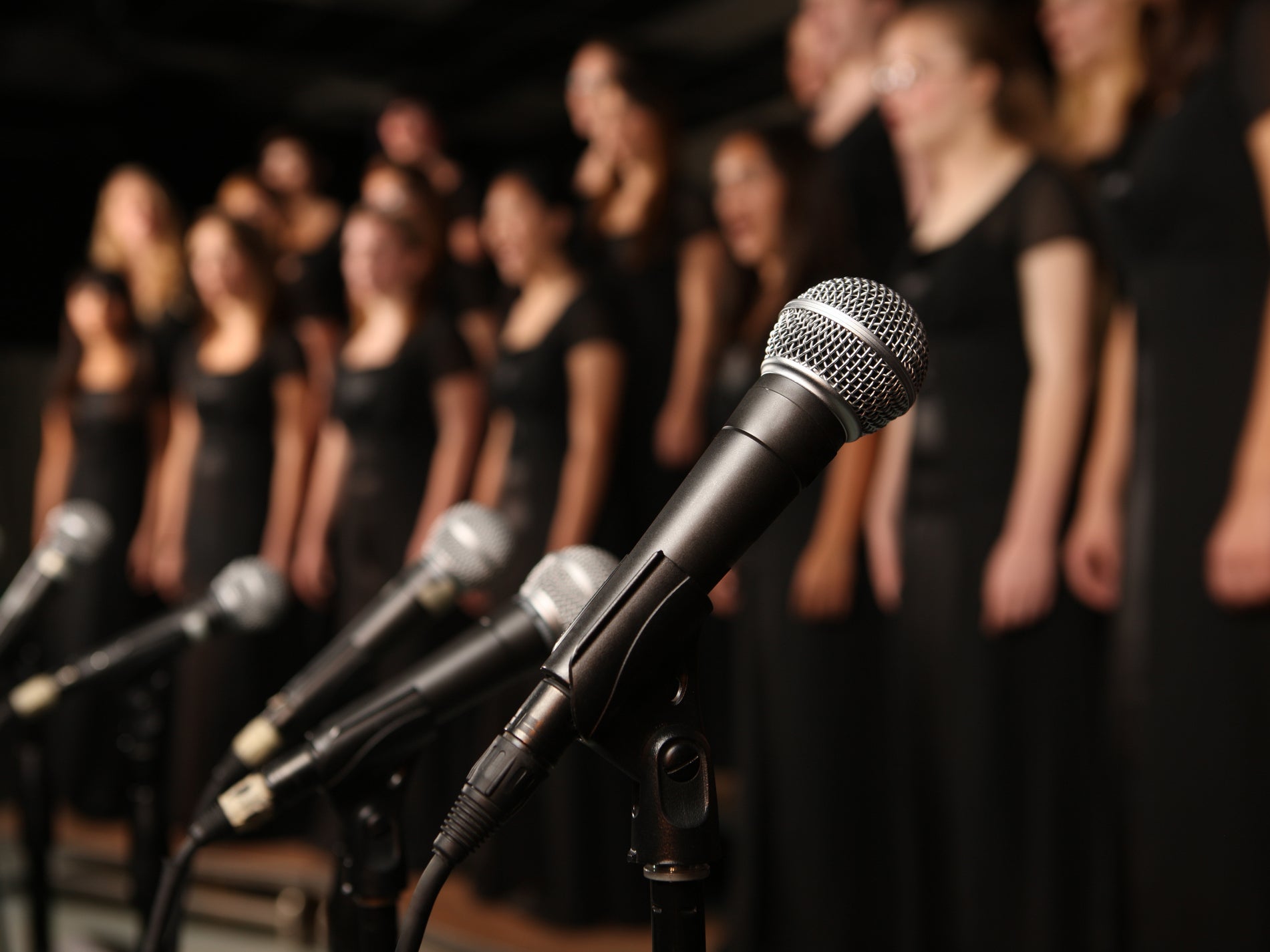Coronavirus: Singing is no more risky than talking, new study suggests
First study of its kind measured aerosols and droplets from group of performers vocalising in controlled environment

Singing is no more risky than talking when it comes to the spread of Coronavirus, new research indicates.
Since the illness swept across the globe, one of the sectors badly affected by closures and lockdown rules has been the performing arts.
Live music has largely been cancelled for many months after singing was identified as a potential “higher risk activity” for spreading the virus.
The research project has been supported by Public Health England and the Department for Digital, Culture, Media and Sport, and was carried out by a collaborative team of researchers including from Imperial College London, the University of Bristol and Royal Brompton Hospital.
The findings, which are not yet peer reviewed or published in a scientific journal, reveal singing is no more likely to spread aerosols and droplets - which can spread the virus - than speaking at a similar volume.
The tests were carried out in an orthopedic operating theatre - an environment of “zero aerosol background” - which allowed the research team to correctly quantify the aerosol and droplets without getting them confused with large numbers of ambient particles in the environment.
The study, which is the first of its kind, measured the amounts of aerosols and droplets (up to 20 µm diameter) generated by a large group of 25 professional performers completing a range of exercises including breathing, speaking, coughing, and singing.
The experiments included the same individuals singing and speaking the words to ‘Happy Birthday’ between the decibel (dB) ranges of 50–60, 70-80 and 90-100 dB.
The researchers discovered there was a steep rise in aerosol mass with increase in the loudness of the singing and speaking, rising by as much as a factor of 20-30. However, singing does not produce very substantially more aerosol than speaking at a similar volume.
They also found there were no significant differences in aerosol production between genders or among different genres (choral, musical theatre, opera, choral, jazz, gospel, rock and pop).
The researchers said musical organisations could consider treating speaking and singing equally, with more attention focused on the volume at which the vocalisation occurs, the number of participants, the type of room in which the activity occurs and the duration of the rehearsal and period over which performers are vocalising.
They said the research could help move towards allowing live musical performances and the safe distancing of performers and the audience, during the pandemic.
Jonathan Reid, Director of ESPRC Centre for Doctoral Training in Aerosol Science and Professor of Physical Chemistry in the School of Chemistry at the University of Bristol and a corresponding author on the paper, said: “The study has shown the transmission of viruses in small aerosol particles generated when someone sings or speaks are equally possible with both activities generating similar numbers of particles.
“Our research has provided a rigorous scientific basis for Covid-19 recommendations for arts venues to operate safely for both the performers and audience by ensuring that spaces are appropriately ventilated to reduce the risk of airborne transmission.”
Culture Secretary Oliver Dowden said: “I know singing is an important passion and pastime for many people who I’m sure will join me in welcoming the findings of this important study.
“We have worked closely with medical experts throughout this crisis to develop our understanding of Covid-19, and we have now updated our guidance in light of these findings so people can get back to performing together safely.”
Declan Costello, a consultant ear, nose and throat surgeon specialising in voice disorders at Wexham Park Hospital, and corresponding author on the paper, added: “This research will give useful information to performers, venues and arts organisations about how they can reintroduce singing performances.”
The research paper Comparing the respirable aerosol concentrations and particle size distributions generated by singing, speaking and breathing, is available on ChemRxiv.
Subscribe to Independent Premium to bookmark this article
Want to bookmark your favourite articles and stories to read or reference later? Start your Independent Premium subscription today.

Join our commenting forum
Join thought-provoking conversations, follow other Independent readers and see their replies